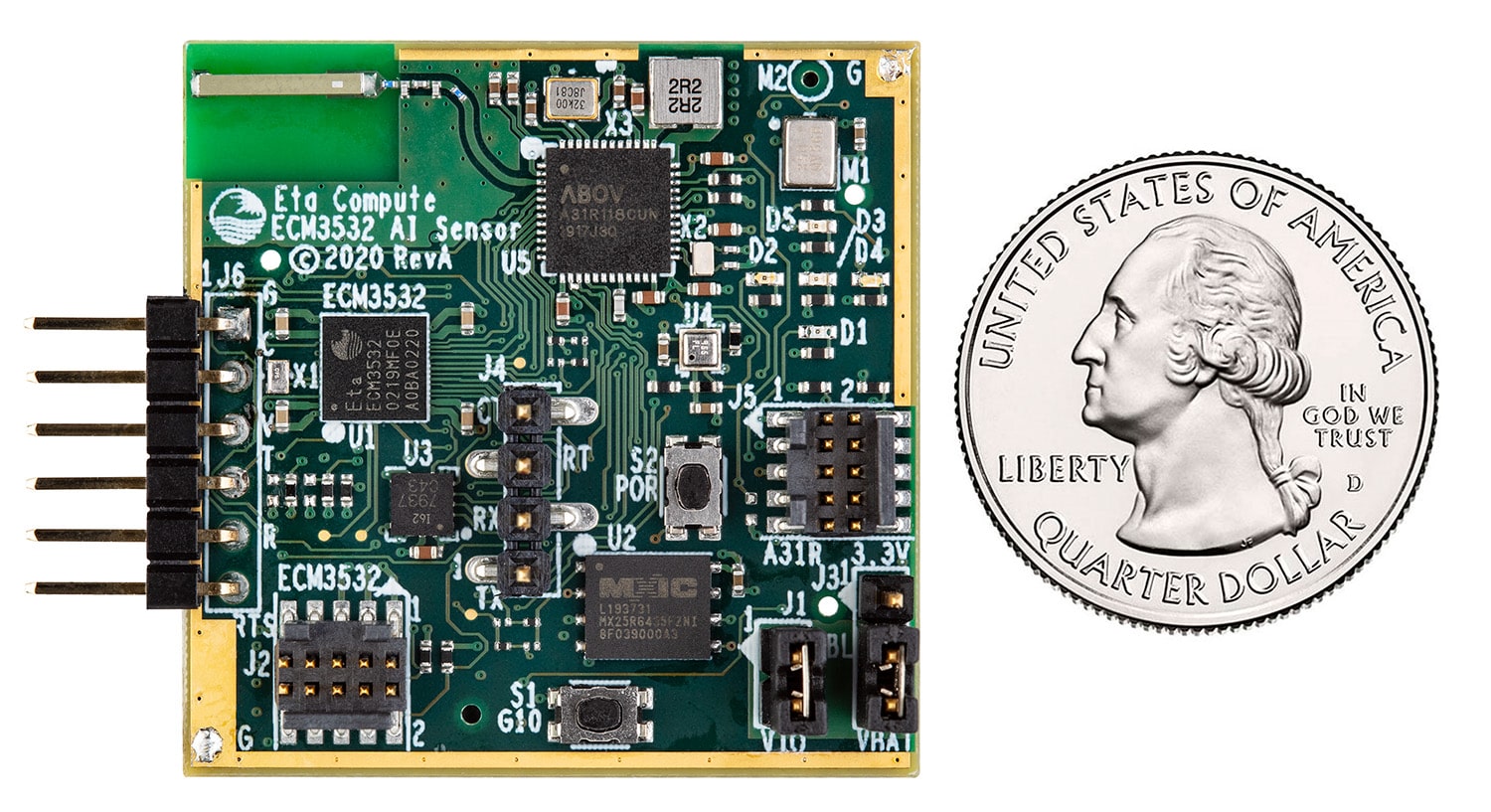Got a great idea for a device with AI at the extreme edge? Self-contained and can run on a coin cell battery, maybe even harvested energy? Needs to fit in a space not much larger than a quarter? Eta Compute has a board for you. This comes with 2 MEMS microphones, a pressure/temperature sensor, a 6-axis MEMS accelerometer/gyroscope, their ultra-low power neural sensor processor, extensibility through a UART port and a micro-SD slot, BLE with antenna for communication and battery cradle, all in a 1.4”x1.4” board. You can learn more at a free workshop they are hosting on July 14th (I was told that all the free promotional boards have already been taken!)

Users can develop their AI solution through partner Edge Impulse’s TinyML development pipeline, uploading the completed solution through the UART port. One enthusiast was able to develop, upload and test an alarm detection system in under one hour.
Sensors, AI on a Tiny Board with Tiny Power
I talked to Semir Haddad (Sr Dir Product Marketing) at Eta Compute to understand why they developed this board. He told me that a lot of their customers want to prove out a solution, sensors, AI and communication, but they were having to hack together their own solutions through multiple boards or adapt evaluation boards, all of which takes time and creates debug and scaling problems. Those users wanted to get quickly to a proof of concept, even a solution they could deploy quickly in the field, say in an agricultural application. They wanted to prove the solution out and pilot at a modest scale, before deciding if they want to go to volume production in a custom design.
Semir discussed some addition use-cases, including vibration detection for machine monitoring, or detecting doors or windows opening or closing. He mentioned pressure detection, saying that it common to fuse this kind of sensing with motion for more accurate motion/position detection.
Also together with the Edge Impulse solution, microphones can be used such to recognize learned sounds (a chicken squawking for example – Warning! Fox in the chicken pen!) or wake words and command phrases (unlock or lock the gate). Similarly, the 6-axis motion sensor can be used for gesture detection. Between these two you have pretty wide range of options to control your edge device.
Tiny Power through Self-Timed Logic, CVFS
The system is built around Eta Compute’s ECM 3532 neural sensor processor on which I’ve written before. This has all the capabilities of a hybrid multi-core Cortex-M plus DSP solution, but built on self-timed logic with continuous voltage and frequency scaling (CVFS). That’s continuous, unlike conventional DVFS which can only switch between a small number of voltage and frequency options. These features allow for this processor to get under 1mW for inference operations and to get always-on operation (in support of the sensors) under 1uA.
Eta Compute’s software partner (Edge Impulse) is known for their TinyML pipeline, which I’m told together with this development board provides a pretty much turnkey solution – no code needs to be written to get a proof of concept up and running very quickly.
So if you want build with AI at the extreme edge, check them out!
Register for Workshop
Remember to register for free workshop. You can also learn more about the board HERE. Also, you can buy the boards through DigiKey.
Share this post via:







Quantum Computing Technologies and Challenges